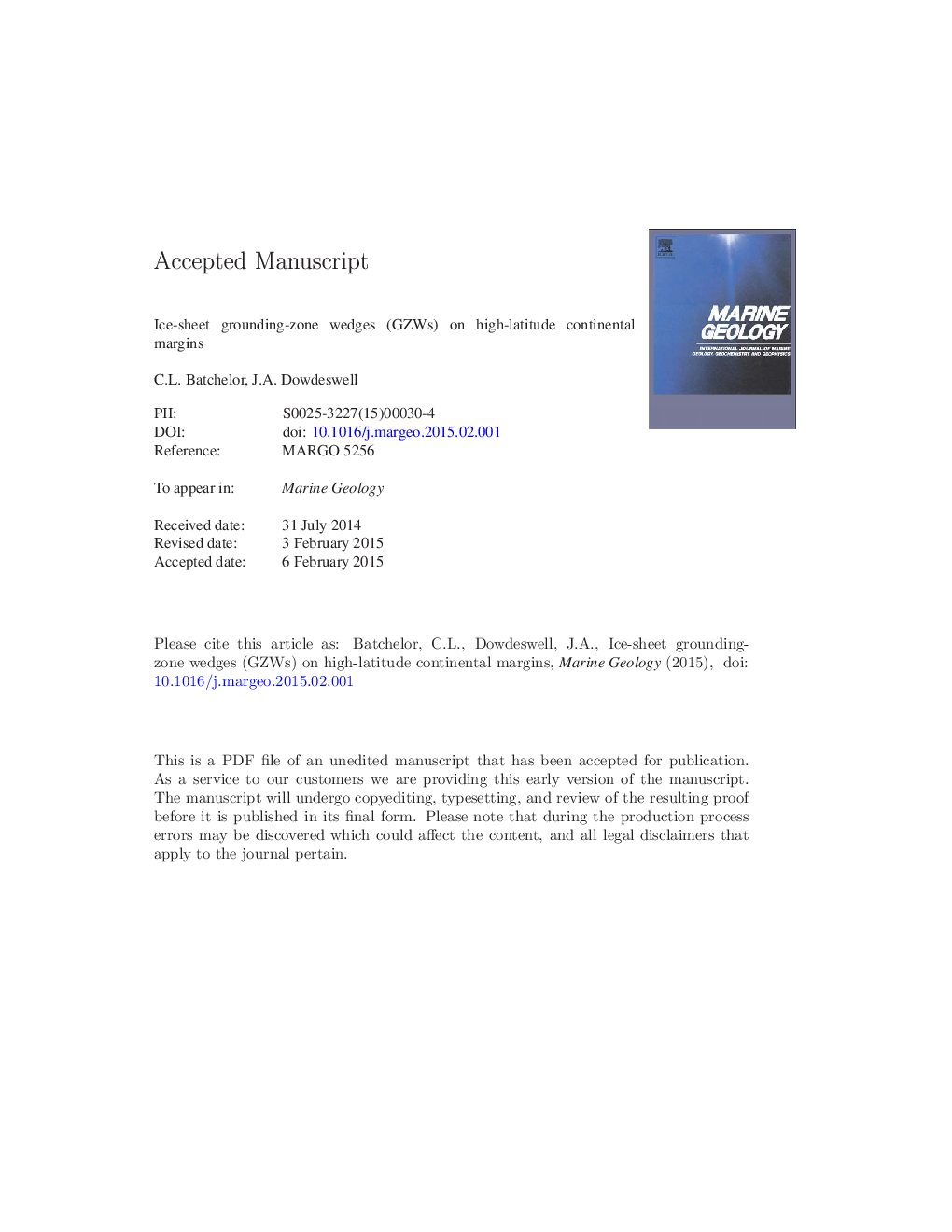| Article ID | Journal | Published Year | Pages | File Type |
|---|---|---|---|---|
| 6441513 | Marine Geology | 2015 | 104 Pages |
Abstract
Grounding-zone wedges (GZWs) are asymmetric sedimentary depocentres which form through the rapid accumulation of glacigenic debris along a line-source at the grounding zone of marine-terminating ice sheets during still-stands in ice-sheet retreat. GZWs form largely through the delivery of deforming subglacial sediments. The presence of GZWs in the geological record indicates an episodic style of ice retreat punctuated by still-stands in grounding-zone position. Moraine ridges and ice-proximal fans may also build up at the grounding zone during still-stands of the ice margin, but these require either considerable vertical accommodation space or sediment derived from point-sourced subglacial meltwater streams. By contrast, GZWs form mainly where floating ice shelves constrain vertical accommodation space immediately beyond the grounding-zone. An inventory of GZWs is compiled from available studies of bathymetric and acoustic data from high-latitude continental margins. The locations and dimensions of GZWs from the Arctic and Antarctic, alongside a synthesis of their key architectural and geomorphic characteristics, are presented. GZWs are only observed within cross-shelf troughs and major fjord systems, which are the former locations of ice streams and fast-flowing outlet glaciers. Typical high-latitude GZWs are less than 15Â km in along-flow direction and 15 to 100Â m thick. GZWs possess a transparent to chaotic acoustic character, which reflects the delivery of diamictic subglacial debris. Many GZWs contain seaward-dipping reflections, which indicate sediment progradation and wedge-growth through continued delivery of basal sediments. GZW formation is inferred to require high rates of sediment delivery to a fast-flowing ice margin that is relatively stable for probably decades to centuries. Although the long-term stability of the grounding zone is controlled by ice-sheet mass balance, the precise location of any still-stands is influenced strongly by the geometry of the continental shelf. The majority of high-latitude GZWs occur at vertical or lateral pinning points, which encourage grounding-zone stabilisation through increasing basal and lateral drag and reducing mass flow across the grounding zone.
Keywords
Related Topics
Physical Sciences and Engineering
Earth and Planetary Sciences
Geochemistry and Petrology
Authors
C.L. Batchelor, J.A. Dowdeswell,
